Choosing classroom furniture is a fundamental part of creating an effective learning environment. The furniture also influences comfort, engagement, and productivity.
Being aware of what to take into account with these pieces can be a game-changer in classroom decor. In this guide, you will find some key questions that will make it easier for educators and administrators to make informed decisions.
Prioritizing Comfort and Ergonomics
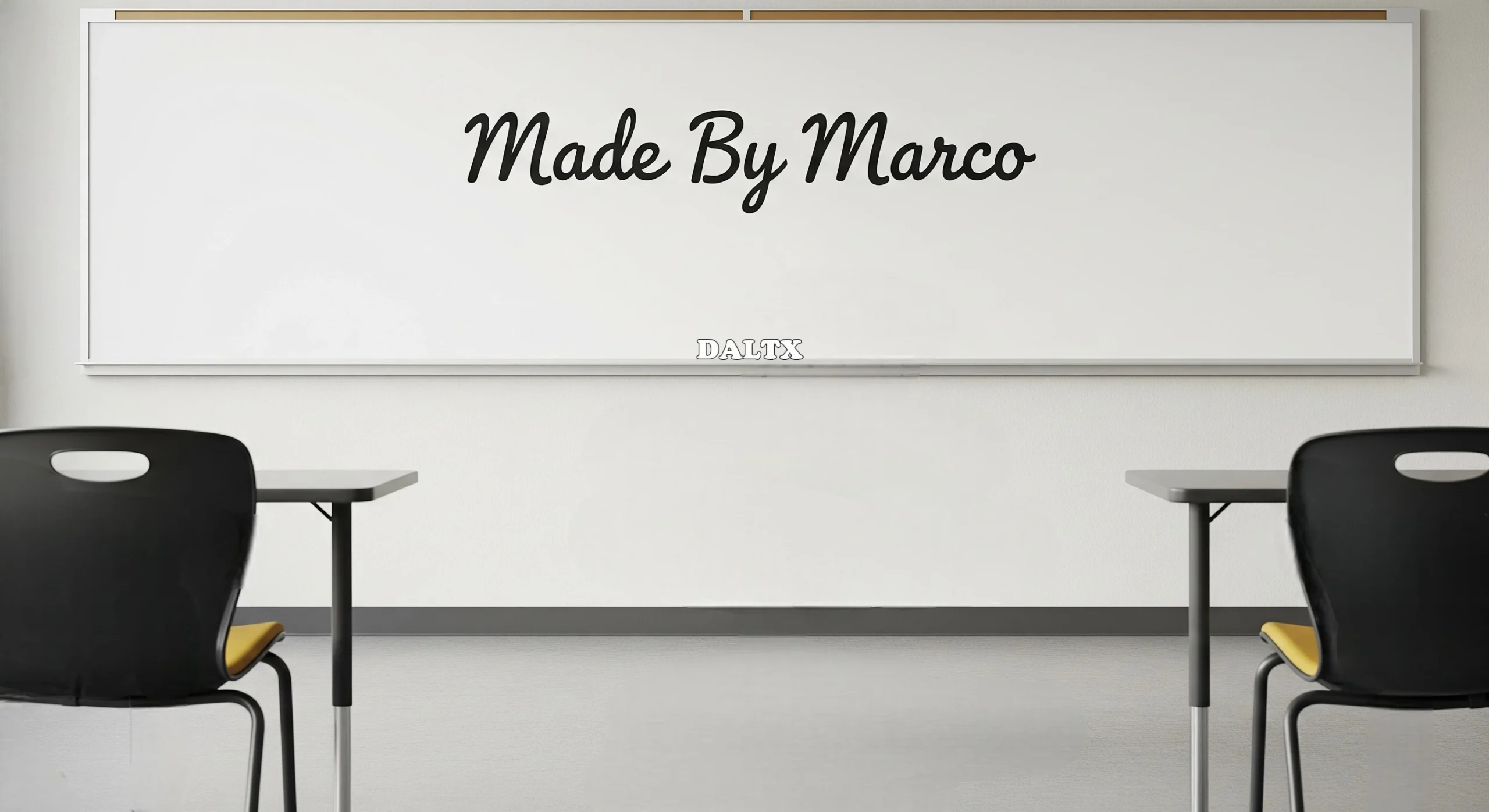
Comfort helps students stay focused and reduce fatigue. Ergonomic furniture, such as Marco school furniture, promotes health by adjusting to the natural posture of the human body.
The adjustable chairs and desks come in different heights, which ensures that when students start school, they can sit comfortably from the start. Soft edges and cushioned backrests enhance comfort, which minimizes discomfort and distractions.
Considering Flexibility and Versatility
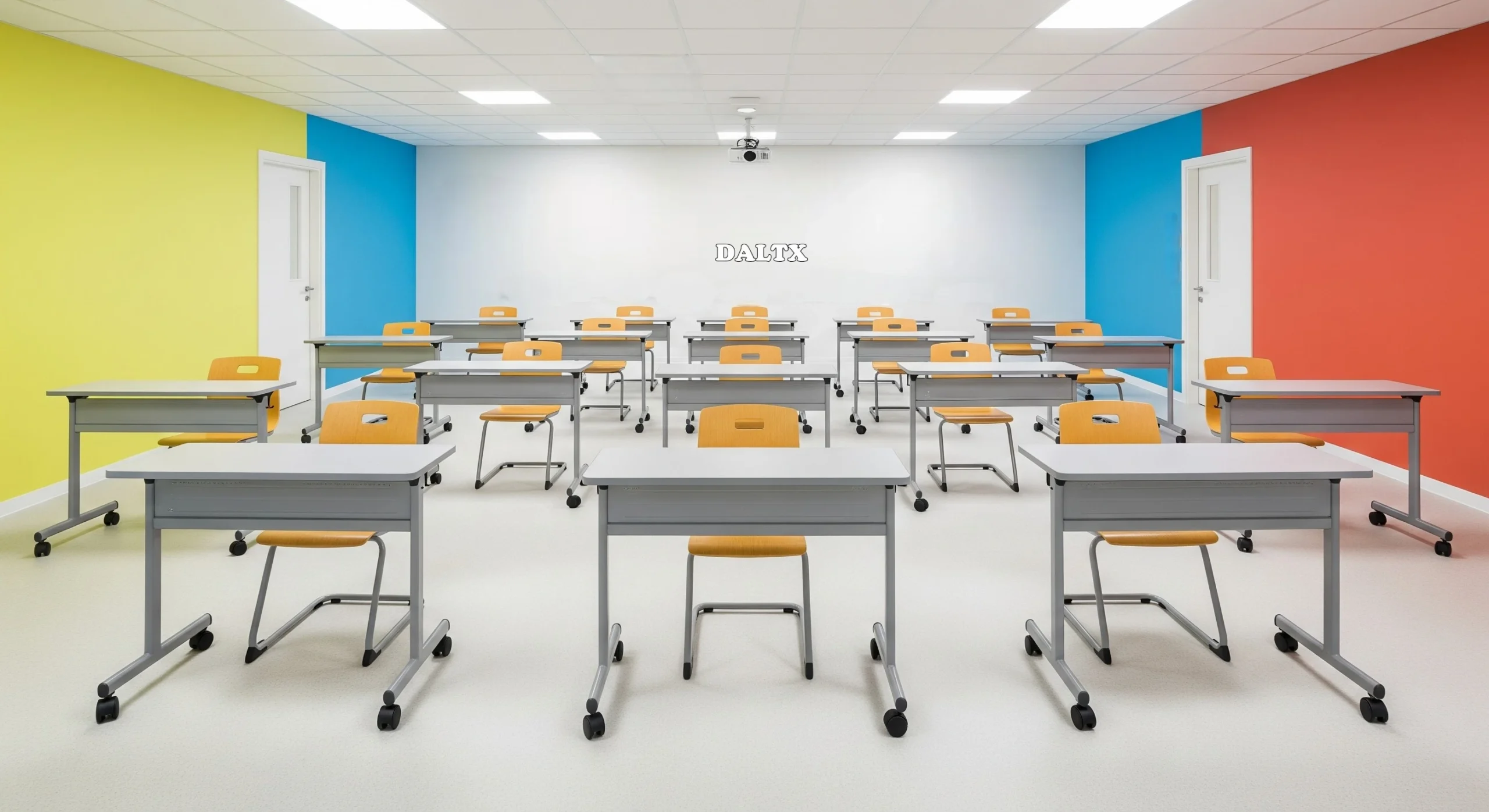
Flexible furniture is excellent for classroom settings. Easily movable tables and chairs can be configured to best facilitate individual work as well as group projects. It encourages adaptation with lightweight materials that allow for easy movement, creating a versatile space tailored to specific needs.
This flexibility promotes synergy and innovation, enabling myriad forms of learner interaction.
Focusing on Durability and Quality

Buying good furniture is an investment, and although its initial cost can be high, in the long run, it saves the cost of replacing worn-out or broken items.
Resilient materials such as solid wood or tempered steel can withstand daily use. Scratch-resistant surfaces help furniture maintain a polished appearance, contributing to a welcoming environment. High-quality furniture offers a reliable foundation year after year.
Improving Visual Appeal
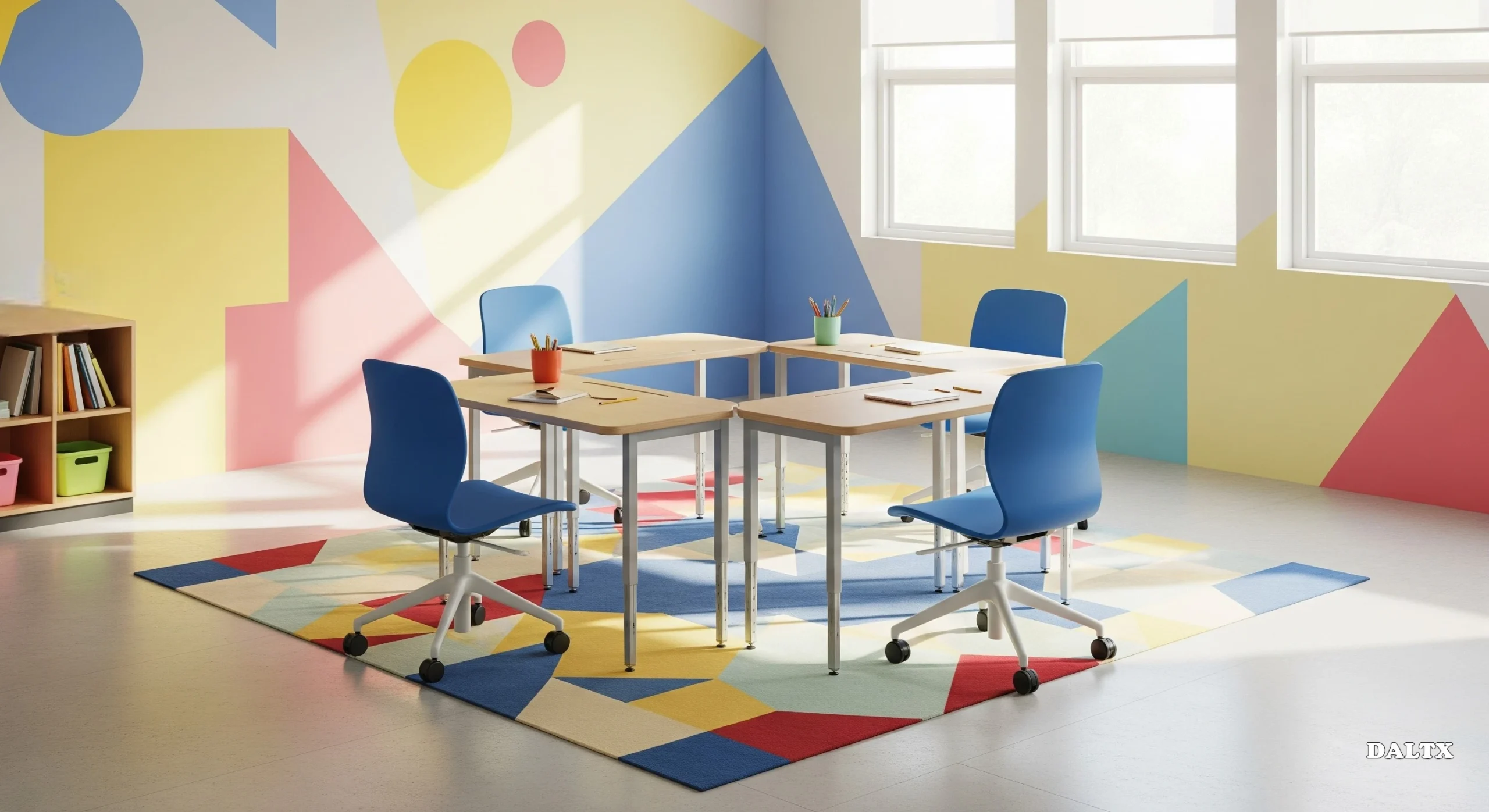
The aesthetics of a classroom affect ambiance and motivation. A space that welcomes and sparks interest with bright colors and contemporary designs can inspire creativity. Coordinated color schemes and cohesive styles create a harmonious atmosphere. A thoughtfully designed environment encourages a positive attitude toward learning.
Ensuring Safety and Compliance
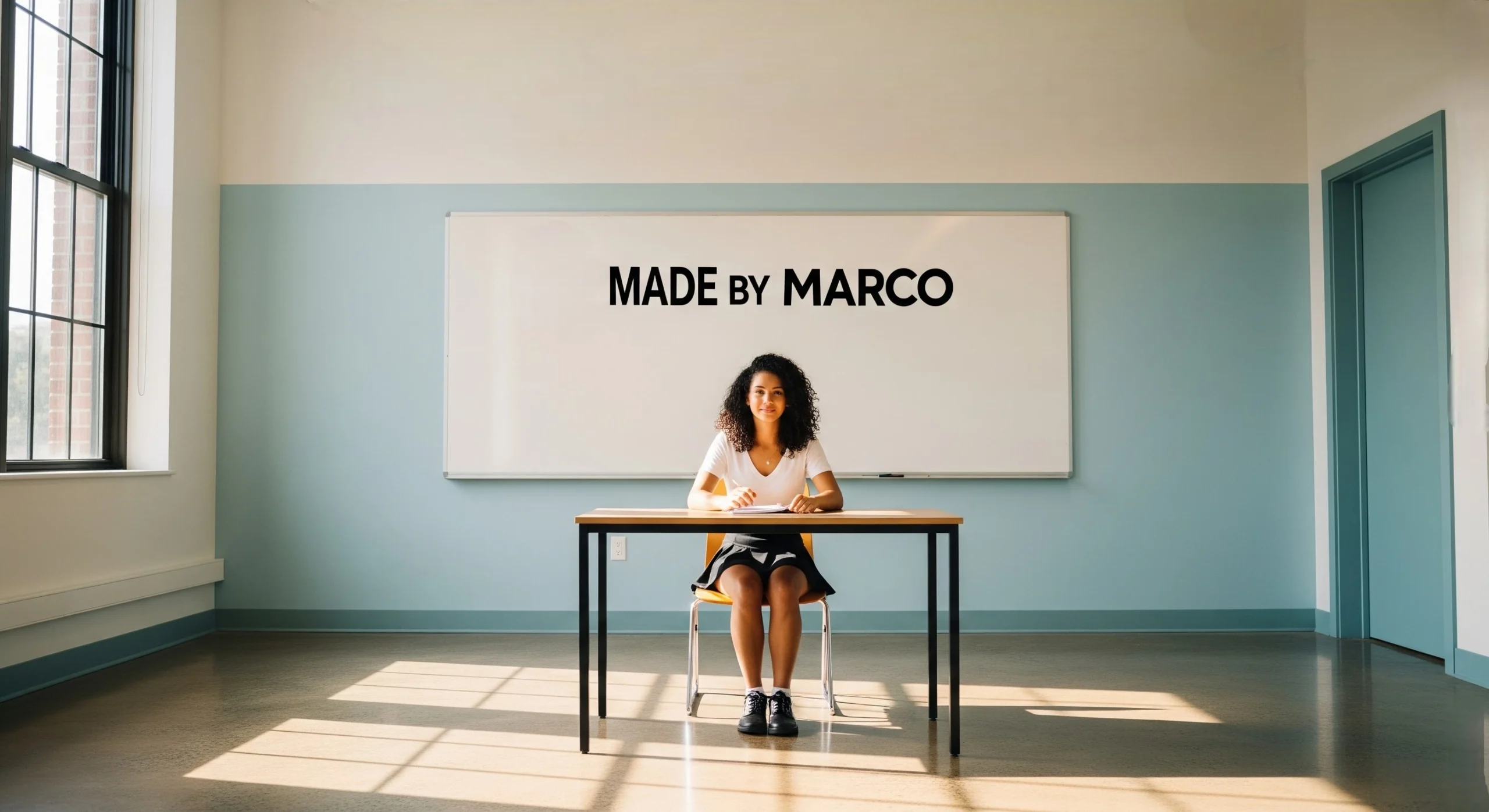
Furnishings must meet safety requirements to prevent hazards. For example, rounded edges reduce the risk of injury, and stable construction prevents tipping or collapse. Fire-resistant, non-toxic materials protect students from harmful chemicals. Compliance with safety standards supports a secure learning environment.
Addressing Space and Layout
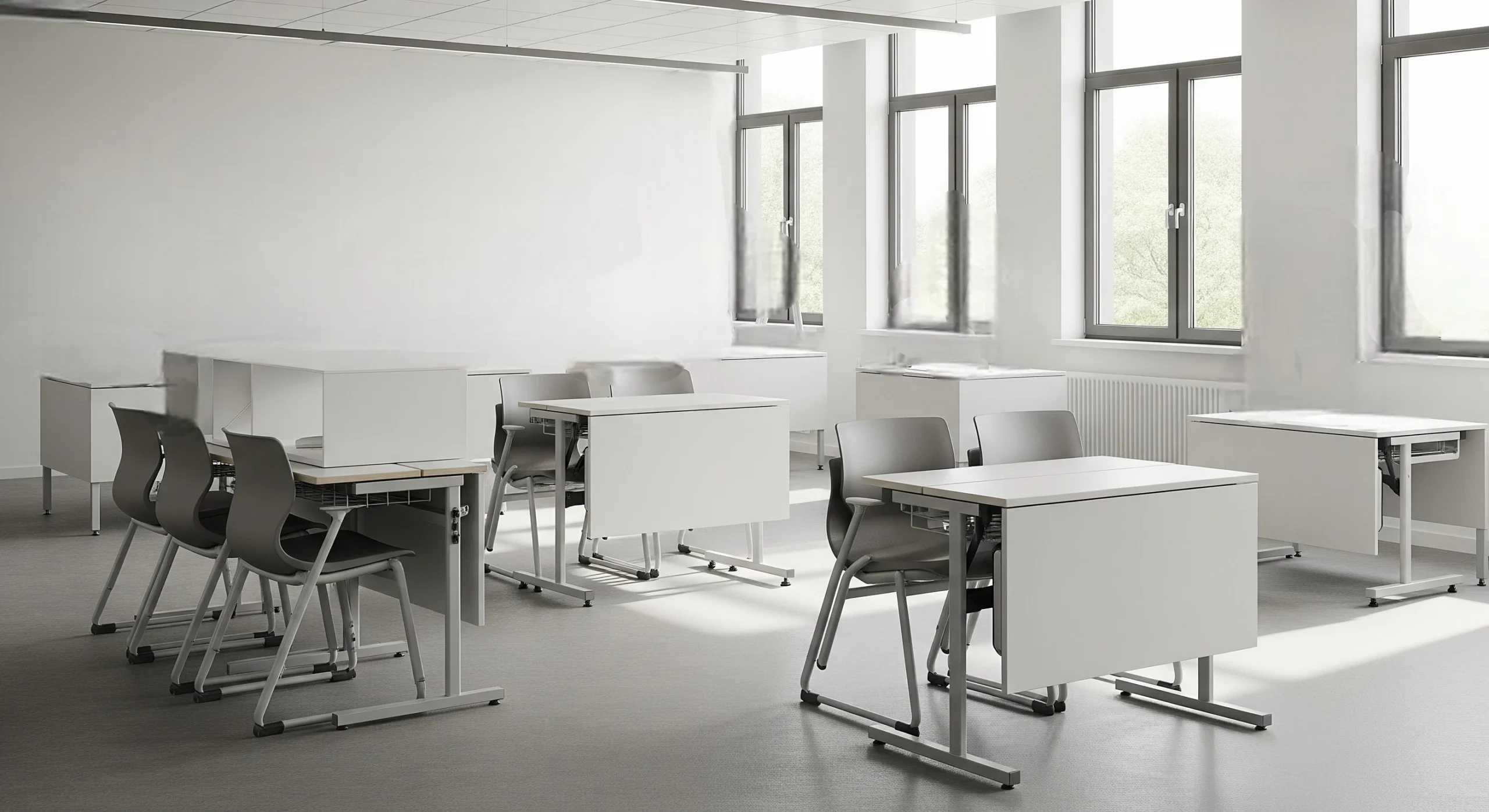
Selecting furniture that fits the available space improves functionality. Compact designs maximize usability without crowding the room. Stackable chairs and foldable tables offer flexibility and can be easily stored when not in use. When it comes to the classroom layout, planning for movement and flow makes classrooms feel more open and ensures accessibility.
Supporting Technological Integration
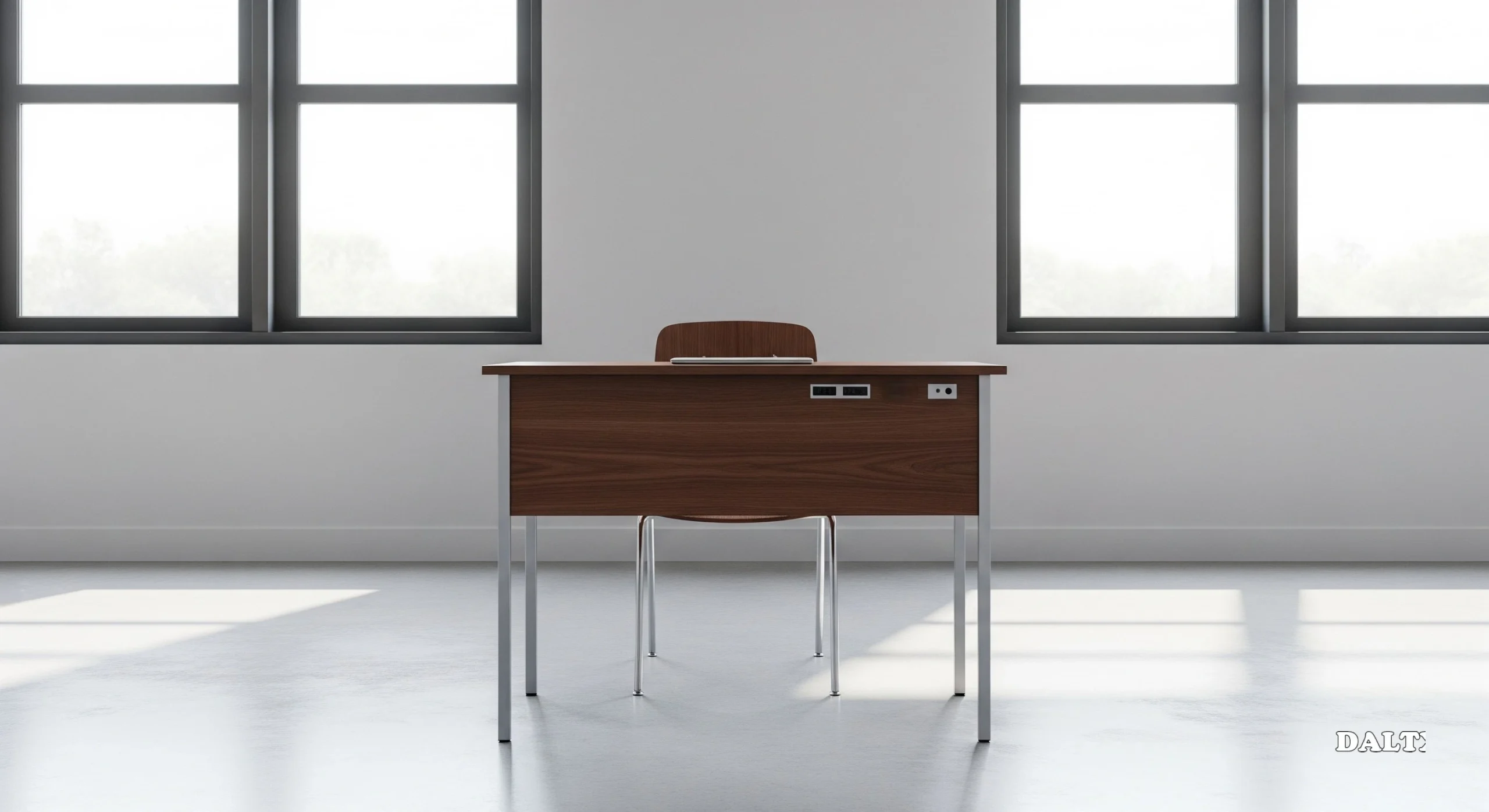
Technology is a core part of nearly every lesson in today’s classrooms. Furniture designed to support devices like laptops and tablets makes it easier to integrate tech into daily learning.
Built-in charging stations and cable management keep devices powered and clutter-free. Desks with dedicated spaces for gadgets help create a smooth and effective digital learning environment.
Encouraging Environmental Responsibility

Sustainability is a growing priority in educational spaces. Choosing furniture made from eco-friendly materials supports environmental conservation. Using recycled and responsibly sourced components reduces the ecological footprint. Schools that adopt green practices demonstrate a commitment to resource stewardship and environmental education.
Conclusion
When choosing classroom furniture, many factors must be considered. Elements like comfort, flexibility, durability, and safety contribute to an effective learning space.
Thoughtfully selected furniture helps schools better support students, leading to improved academic performance and well-being. Educators and administrators should approach these decisions with care. Purposeful design lays the foundation for compassionate education.



